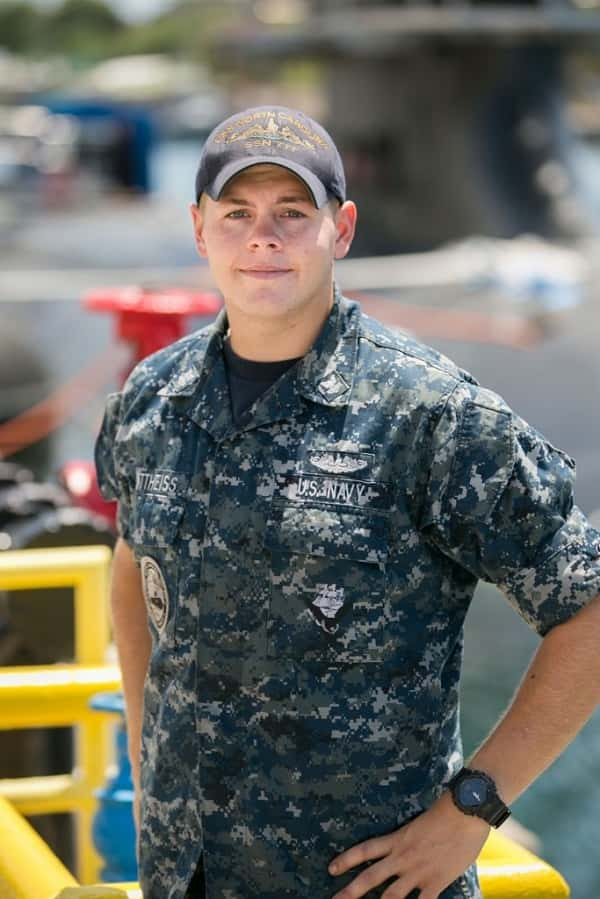 Credit to U.S. Navy Chief Mass Communication Specialist Bill Steele, Navy Office of Community Outreach Public Affairs
Credit to U.S. Navy Chief Mass Communication Specialist Bill Steele, Navy Office of Community Outreach Public Affairs
PEARL HARBOR – A 2013 Marshall County High School graduate and Benton, Kentucky native is serving in the U.S. Navy aboard one of the Navy’s newest attack submarines, the USS North Carolina.
Petty Officer 2nd Class Carter Mattheis is a machinist’s mate aboard the Pearl Harbor-based boat, one of only 12 Virginia-class attack submarines in the Navy’s fleet. The Virginia class is comprised of the Navy’s newest and most advanced subs.
A Navy machinist’s mate is responsible for everything mechanical on the ship that’s non-nuclear.
“I like working with my hands, and I like the family part of this submarine, the camaraderie is one of a kind,” said Mattheis.
With a crew of 130, this submarine is 377 feet long and weighs approximately 7,800 tons. A nuclear-powered propulsion system helps push the submarine through the water at more than 25 mph.
Attack submarines are designed to hunt down and destroy enemy submarines and surface ships; strike targets ashore with cruise missiles; carry and deliver Navy SEALs; carry out intelligence, surveillance, and reconnaissance missions; and engage in mine warfare. Their primary tactical advantage is stealth, operating undetected under the sea for long periods of time.
“Submarine sailors never cease to amaze me with their ability to complete complex missions in the world’s most challenging environments,” said Rear Adm. Fritz Roegge, Commander, Submarine Force, U.S. Pacific Fleet. “Continued U.S. undersea superiority is not possible without their dedication, expertise and professionalism.”
According to Navy officials, because of the demanding environment aboard submarines, personnel are accepted only after rigorous testing and observation. Submariners are some of the most highly trained and skilled people in the Navy. The training is highly technical, and each crew has to be able to operate, maintain, and repair every system or piece of equipment on board. Regardless of their specialty, everyone also has to learn how everything on the ship works and how to respond in emergencies to become “qualified in submarines” and earn the right to wear the coveted gold or silver dolphins on their uniform.
“The coolest part of serving here is that I get to see the world and do a lot of things other people don’t get to do,” said Mattheis.
Challenging submarine living conditions actually build strong fellowship among the elite crew, Navy officials explained. The crews are highly motivated, and quickly adapt to changing conditions. It is a busy life of specialized work, watches, and drills.
“I joined the Navy to serve my country and to better myself,” added Mattheis. “I take pride in helping ensure our nation’s security.“
